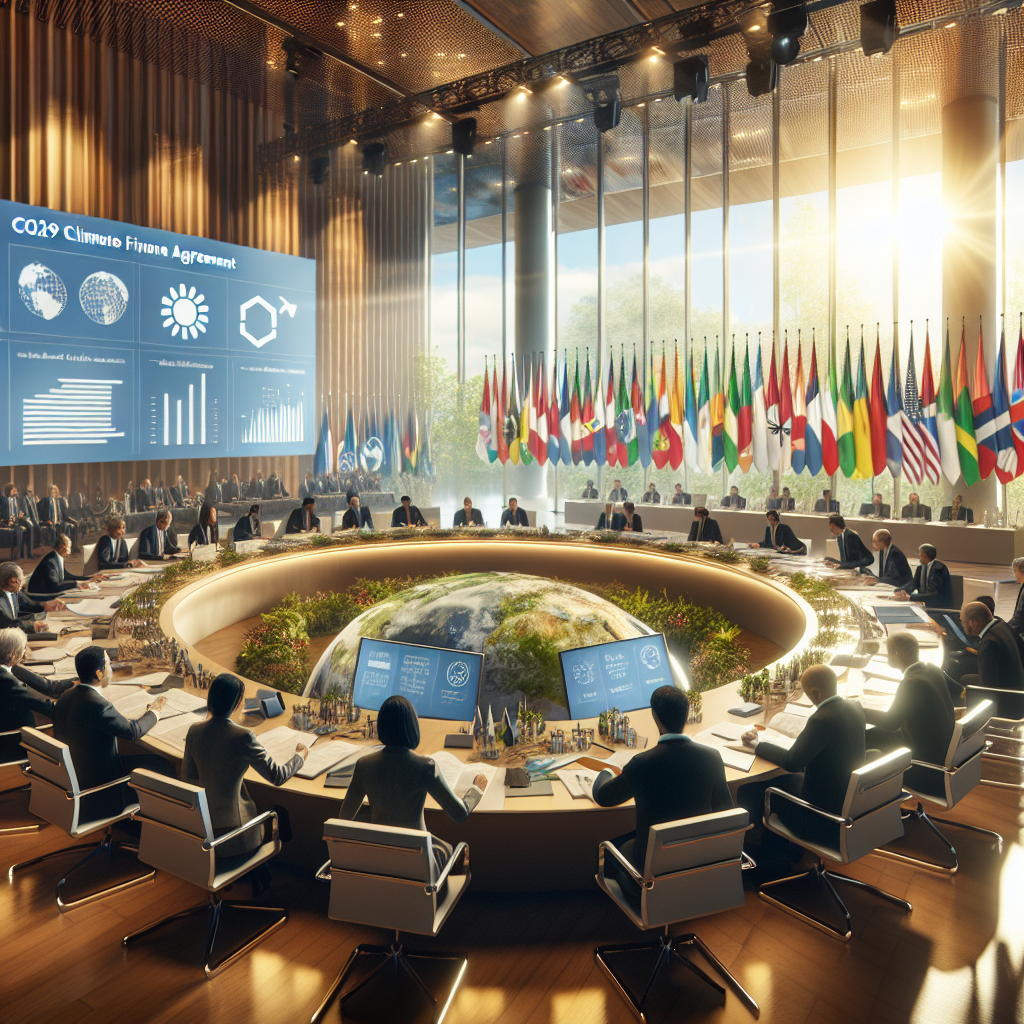
COP29: A Climate Finance Deal with Trade-offs and Challenges
As COP29 closed in Baku, Azerbaijan, delegations from nearly 200 countries reflected on two intense weeks of negotiation aimed at pushing forward the global climate agenda. The primary focus was on setting a fresh climate finance goal to underpin the Paris Agreement’s implementation. While agreements were made, not all outcomes met global expectations. Below, we delve into the key results from COP29 and what they mean moving forward.
Climate Finance: Meeting the Numbers, Missing the Mark?
The highlight of COP29 was the agreement on a new climate finance target, aiming to increase annual funding from USD 100 billion to USD 300 billion by 2035, though this figure falls short of the originally anticipated USD 1.3 trillion. The language in the agreement remains vague, particularly regarding accountability and responsibility for fund disbursement.
- Developed countries will lead the charge, but the specifics of accountability remain unclear.
- There’s a call for mobilizing funds from various sources, including private and public sectors, as well as multilateral and bilateral channels.
The discourse around the finance deal illuminated divides, with countries like India and others highlighting the inadequacy of the financial proposals to meet climate needs equitably. The EU, advocating for realistic and achievable targets, proposed broader contribution bases to incorporate emerging economies like China and Saudi Arabia.
The Stalemate on Nationally Determined Contributions (NDCs)
The advancement of NDCs remained a critical priority. Despite the urgency, COP29 saw modest progress towards high-ambition emissions reduction targets necessary for achieving the 1.5°C goal set by the Paris Agreement.
- UK and Brazil unveiled progressive climate plans, setting ambitious emission cut targets, yet the need for global alignment on bolder NDCs still holds.
- The forthcoming Biennial Transparency Reports will be crucial in assessing which countries back their pledges with action.
Article 6 and Carbon Markets: New Guidelines Established
After years of discussions, COP29 laid down the guidelines for operationalizing Article 6 of the Paris Agreement. This involves processes for cooperative emission reductions through international carbon markets:
- Guidelines finalized for quantifying and certifying emission reductions under the Paris Agreement’s crediting mechanism.
- Authorizing trades must avoid double-counting, presenting new opportunities for corporate engagement in these markets.
- A “dual-layer” registry system was agreed upon for tracking international mitigation outcome transfers.
While this marks significant progress, the actualization of these guidelines at the national level is crucial to ensure efficacy.
Pushing for Adaptation Amidst Financial Constraints
Adaptation goals, particularly strengthening National Adaptation Plans (NAPs), were another focal point of COP29. However, advancements remain procedural rather than substantive.
- The Baku High-Level Dialogue on Adaptation kicked off discussions aimed at aligning the UAE Framework for Climate Resilience with the Global Goal on Adaptation.
- The challenge persists as adaptation finance lags, and procedural delays continue despite urgent needs.
The focus now shifts to ensuring actionable strategies are in place for COP30 to drive meaningful progress on adaptation, especially in vulnerable regions.
The Methane Reduction Challenge
COP29 also focused on methane—an impactful greenhouse gas. A notable outcome was the Declaration on Reducing Methane from Organic Waste:
- The declaration commits countries to target methane emissions from organic waste within future NDCs.
- The ambiguity in defining “organic waste” poses a challenge to implementation consistency across countries.
While the declaration signals progress, the key hurdle remains ensuring the requisite funding to achieve the set targets.
Looking Ahead to COP30
COP29 concluded with a mix of accomplishments and unmet aspirations. It shines a spotlight on the inadequacies in climate finance and the complexities in global climate policy coordination. As the global community looks forward to COP30 in Brazil, there remains an urgent need for clearer accountability structures, concrete adaptation action, and an inclusive approach to finance that embodies the justice climate policy demands.
It’s essential for all stakeholders to cement these frameworks into actionable paths—where transparency, cooperation, and enhanced ambition are driving forces towards a sustainable future.
Source: https://www.sei.org/perspectives/cop29-closes-with-a-climate-finance-deal-but-at-what-cost/

